#selvedge denim
Text
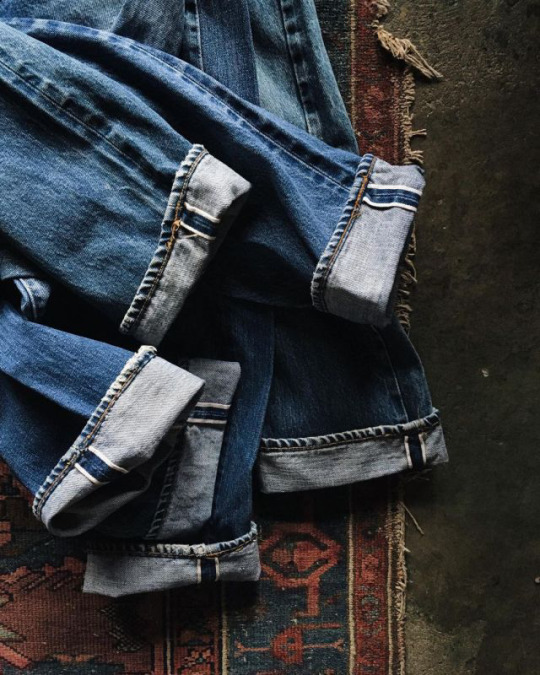
Selvedge
83 notes
·
View notes
Text
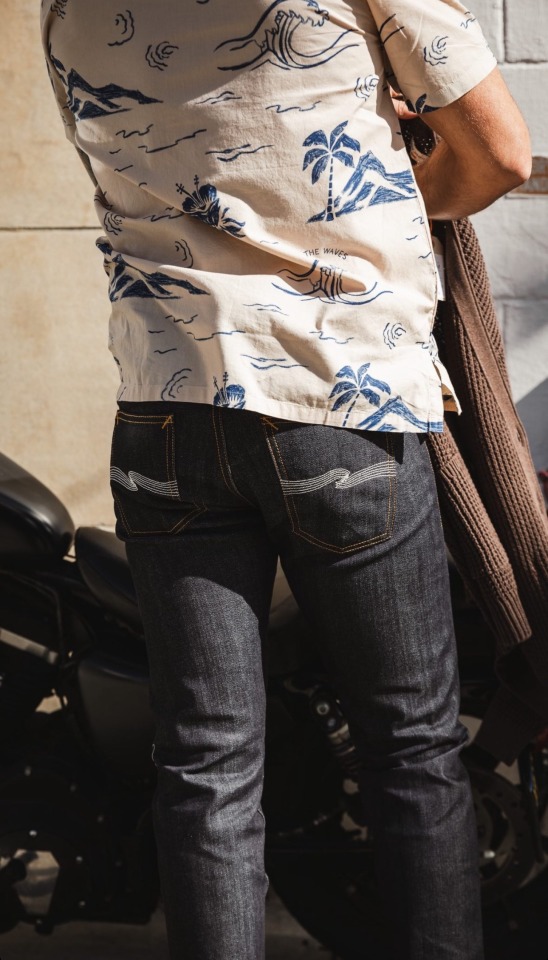
Butterscotch LBC
#fashion#style#menstyle#menswear#mensfashion#nudie jeans#denim#denimstyle#selvedge denim#denim jeans#raw denim
20 notes
·
View notes
Text

236 notes
·
View notes
Photo

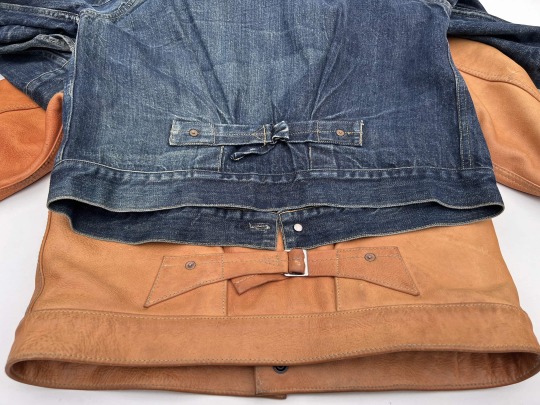
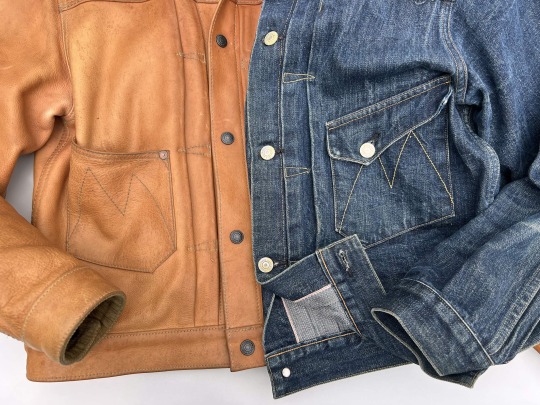


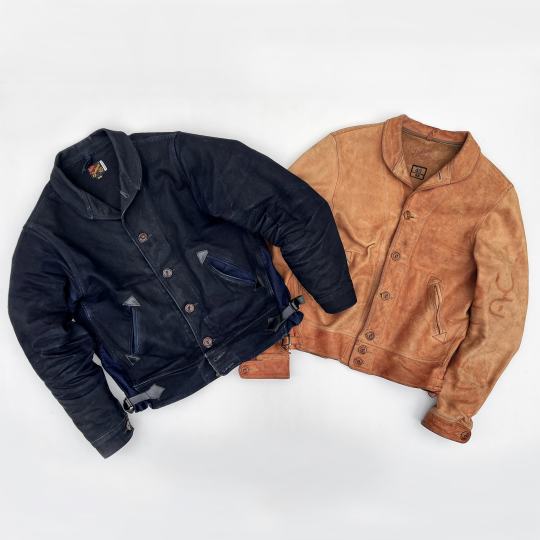


Mister Freedom® RANCH BLOUSE “Randall” & CAMPUS BLOUSE “Midnight” denim:
Selvedge denim & veg-tan cowhide leather evolution.
#Mister Freedom#Mister Freedom®#veg-tan leather#Ranch Blouse#Campus Blouse#Selvedge denim#Evo#indigo
33 notes
·
View notes
Text

Levi’s 501xx from 1987 and Omega Seamaster Aqua Terra
7 notes
·
View notes
Text
Sztuka ma nogi – czyli czym jest japoński denim?

W dzisiejszym świecie modowej masówki, warto czasem zwolnić tempo i skierować uwagę na detale, poszukując autentyczności i oryginalności. Dla tych, którzy kierują się wartościami ekologii i etyki w modzie, fascynującym obszarem do zgłębienia jest produkcja dżinsu o tradycyjnym i naturalnym rodowodzie. Surowy denim, zwłaszcza ten pochodzący z Japonii, budzi ogromne zainteresowanie, ponieważ z biegiem czasu nabiera niepowtarzalnego charakteru razem z użytkownikiem. Jest rezultatem pracy prawdziwych rzemieślników, niosąc za sobą bogatą historię. Źródło inspiracji, przykład klasyki, wpływowy kawałek materiału z krajką, którego nie powinno się prać, ale dlaczego to właśnie ten japoński denim określany jest jako “ten najlepszy”?
Denim zazwyczaj kojarzony jest z USA i nie bez powodu – to właśnie tam został spopularyzowany. Wizerunek kowboja lub poszukiwacza złota w spodniach marki Levi’s jest niemalże zakorzeniony w naszych umysłach. Założyciele tej marki zasłużyli się, sprawiając, że ich dżinsy były niezwykle wytrzymałe dzięki metalowym sprzączkom, co skłoniło klasę robotniczą do gorącego przyjęcia tego produktu. Choć dżins stał się powszechnie znany dzięki Amerykanom, to to właśnie Japończycy doprowadzili denim do perfekcji w swojej formie.

Jak to jest zrobione?
Proces tworzenia japońskiego denimu to wymagająca praca rzemieślnika, której towarzyszy znaczny nakład finansowy i niezwykła precyzja. Jednak właśnie o to chodzi, prawda? Lubimy mieć pewność, że inwestujemy w produkt stworzony z dbałością, z minimalnym wpływem na środowisko i zgodnie z tradycją.
W produkcji surowego denimu każdy etap odgrywa kluczową rolę w kształtowaniu finalnego produktu. Wszystko zaczyna się od starannie wyselekcjonowanej wysokojakościowej bawełny o długich włóknach, stanowiącej fundament trwałości denimu. Następnie surowa bawełna przechodzi proces czyszczenia, eliminujący wszelkie zanieczyszczenia i ujednolicający strukturę włókien.
Co do charakterystycznego niebieskiego koloru dżinsów, pochodzi on pierwotnie od naturalnego barwnika indygo pozyskiwanego z rośliny indygofery, która oprócz zastosowań w produkcji denimu ma także właściwości lecznicze, zwłaszcza przeciwbakteryjne. W tradycyjnym japońskim denimie nadal stosuje się barwienie naturalnym indygo. Bawełna może być barwiona ręcznie na etapie rozdzielania włókien lub już na uprzednio uprzędzonych częściach garderoby, w zależności od zamierzonego efektu.
Istotną kwestią jest także sposób, w jaki przędzie się japoński denim, ponieważ to właśnie charakterystyczna krajka pozwala nam często rozpoznać produkt wysokiej jakości. Krajka, znana również jako efekt "selvedge" (lub "selvage"), jest rezultatem specyficznego procesu tkania denimu. To zakończenie tkaniny charakteryzuje się widocznymi, często kontrastującymi kolorami nitek, które są integralną częścią struktury tkaniny. Proces ten zaczyna się na tradycyjnych krosnach wahadłowych, gdzie dodatkowe nitek są wplecione w brzegi tkaniny, zastępując standardowe brzegi cięte. Podczas zwijania tkaniny na wałki, te specjalne nitek na brzegach stają się bardziej widoczne, tworząc charakterystyczną krawędź z ozdobnymi nitkami, będącą swoistą wizytówką tradycyjnego, wysokiej jakości denimu. Krajka nie tylko dodaje estetyczny element do spodni, ale również świadczy o zastosowaniu tradycyjnych metod produkcji, takich jak tkanie na krosnach wahadłowych, co dodatkowo podkreśla rzemieślniczy charakter denimu.

What the hype is all about?
Popularność japońskiego denimu czerpie swoje źródło z różnorodnych kręgów kulturowych, a zainteresowanie nim jest wynikiem różnych czynników. Grupa hipsterów przyciągnięta została niezwykłym procesem starzenia się materiału. Ich codzienne doświadczenia odbijają się na dżinsach, które nie podlegają standardowemu fabrycznemu ścieraniu, charakterystycznemu dla amerykańskich dżinsów. Ślady noszenia, czy to od specyficznej zawartości kieszeni, czy też wynikające z indywidualnego sposobu siedzenia czy chodzenia, stają się formą wyrażenia siebie poprzez ubranie.
W streetwearowej subkulturze popularność japońskiego denimu można tłumaczyć jego ograniczoną dostępnością, zwłaszcza w przypadku marki Evisu. Marka ta wyróżnia się nietuzinkowymi wzorami na spodniach, początkowo malowanymi przez twórcę marki. Te unikalne wzory nie tylko czynią je wyjątkowymi, ale także nadają charakterystyczny styl na ulicy. Dodatkowo, wzór na kieszeni może być doskonale dopasowany do nowych sneakersów, co jest prawdziwym skarbem dla entuzjastów streetwearu.
Dla wielu osób decydującym czynnikiem w wyborze japońskiego denimu jest jego niezwykła klasyczność. Ciemny odcień indygo, reprezentujący zarówno elegancję, jak i swobodę stylu casual, przyciąga uwagę. Dodatkowo, niezaprzeczalna jakość denimu, będąca pierwowzorem japońskiej odzieży roboczej, nadal stanowi inspirację dla takich marek jak Comme des Garçons czy Yohji Yamamoto, a także dla projektantów, takich jak Nigo, czy obecnego dyrektora kreatywnego Louis Vuitton, Pharrella Williamsa. Japoński denim niejednokrotnie odnajduje się w korzeniach kultury Harajuku, stanowiąc ważny element w dziełach twórczych artystów i projektantów.

Poszanowanie dla tradycji, środowiska i ekspresji
Japoński surowy denim o wykończeniu "selvedge" to zdecydowanie coś, co zasługuje na uwagę. To nie tylko inspiracja do kreowania swojego wizerunku, ale także do tworzenia marki i produktów w sposób zrównoważony i przyjazny dla środowiska. Pomimo wysokich kosztów, zarówno dla twórcy, jak i nabywcy, inwestycja w odpowiednią parę japońskich dżinsów jest rzeczywiście warta rozważenia. Dbając o nie w odpowiedni sposób, prawdopodobnie nie będziecie potrzebować innych przez kolejne dekady. Ta idea doskonale wpisuje się w obecny trend budowania kapsułowej garderoby - uniwersalne, trwałe i ponadczasowe, dokładnie to, co oferuje japoński denim.

Ewa Pijaj, Zarządzanie Kulturą i Mediami UJ
2 notes
·
View notes
Photo



We haven’t been on here for a long while. Thinking about getting back into Tumblr. Anyone in here? Let me know!
16 notes
·
View notes
Text

45 notes
·
View notes
Text
Mid 20th century garments of the average American has had a grip on me these pass few months. BRING BACK SELVEDGE DENIM AT JC PENNEY
1 note
·
View note
Link
For decades, crafted denim was a topic for a niche audience of denim connoisseurs—inside knowledge that felt foreign to the average consumer. Today, an increasing awareness of sustainability and rising consumer interest in heritage and tradition are influencing a denim renaissance that honors the process of creation, putting the focus on the journey of design itself as much as the end result. Brands are transforming today’s denim offerings by bringing to light the craftsmanship interwoven in its creation while refreshing the market with progressive denim, reimagining iconic pieces for a new generation.
Honoring the process that goes into an apparently simple jean is not only culturally informed but also highlights the skills and techniques developed over time that have transformed the denim industry and contributed to its legacy today. Its weave, dyes, washes and finishes—and even repurposing old or leftover scraps into new items—are attributes that are now just as important as shape and construction. They represent the true essence of the garment, imbuing the design with an irreplaceable artisanal touch.
Tods Resort ’23
Rooted in Tradition
With a rich history that dates back to the late 17th century, denim making was founded on the principles of useful skill and material mastery, making it an ideal choice for workwear styles. And while its manufacturing has evolved over the years, pioneering mills like Japan’s esteemed Kurabo and Italy’s family-owned Candiani continue to maintain their stance as industry-leading denim artisans with decades of heritage as validation. They, like many others, advocate for the value of premium cotton fibers, slow craft techniques and meticulous detailing above all else. Likewise, well-established denim brands, namely Levi’s, Lee and Wrangler, all share an equally rich and layered legacy where craft is central to their products.
This penchant for craft and artisanal heritage is no stranger to the luxury end. Fashion houses and high-end designers across the globe have found denim to be a perfect canvas for crafted designs, reframing denim’s humble origins to highlight the skilled artistry imbued in each garment.
At Tod’s, for example, Creative Director Walter Chiapponi delivered a Resort ’23 collection rooted in denim craftsmanship, particularly through traditional patchwork techniques where pieces of fabric, carefully sewn together with unfinished, frayed edges, exuded a textural, almost imperfect surface for items like straight-leg jeans and trench coats. The designer noted that the uneven textures were meant to bring a sense of humanity to the designs, connecting the wearer to the garment as if it too had a history.
Similarly, traditional dyeing techniques have also been gaining momentum across the denim landscape. At Maison Margiela, Creative Director John Galliano infused a traditional shibori dyeing technique into statement pieces for his Resort ’22 collection. Evoking a nostalgic emotion of hand-me-downs, pieces seemed to display a patina of age carefully adorned by shibori dye patterns in true indigo dyes. Utilizing a technique that emerged to renew old, faded, stained and damaged clothes, Galliano pays homage to what makes craftsmanship so appealing—the skilled hands that have, for centuries, transformed such humble textiles into masterpieces.
Diesel Resort ’23
Emerging Technologies
Over the years, adaptations to new technologies in machinery, fibers and finishes have helped restructure the modern face of denim craftsmanship. No longer limited to classic 3X1 twill constructions or simply dyed and untreated surfaces, a host of creative and technical offerings are emerging to propose unique takes on the classics. Whether it be through elaborate devoré finishing techniques or embedded fiber-tracing technologies, perspectives both old and new have helped solidify denim as a sizable player thriving at the intersection of craft and technology.
Continued developments from industry-leading weavers and finishers have spurred a new wave of denim creatives aiming to realize the endless potential of this beloved textile. Among those leading the pack, Diesel has seen a recent resurgence among consumers aligning with the brand’s fresh approach to denim as the ultimate design medium for self-expression.
Fusing classic denim archetypes from Diesel’s archive with experimental advancements in dyeing and finishing, the brand, under the direction of Glenn Martens, has forged something altogether new for the once-humble fabric. Offerings from its Resort ’23 collection emerged with hybrid dye characteristics and super-tactile surface distressing, all deserving of their own moment in the spotlight. Even earlier collections from Diesel such as its FW 22/23 showing, featured mirror-effect waterproof waxing, eroded super fades and intensely shredded fur-inspired outcomes unlike anything seen before. Martens has undoubtedly reshaped the brand with his unique forward vision, pushing the boundaries of traditional denim craftsmanship while garnering a cult-like status across fashion communities.
Milan Street Style
Propelled by the ingenuity, skill and passion of their founders, modern players in the denim industry continue to hone denim’s potential in a true exercise of creativity. Coupled with sustainability-led innovation, crafted styles today not only look good but also do good for the planet. New voices in the denim space like Pangaia and Reformation have made conscious efforts to improve production processes, including the use of regenerative Himalayan nettle fibers and new pigments with traceability technologies embedded directly into the fabric of jeans.
As consumers become more concerned with a sustainable future, they also learn to develop a greater appreciation for the history behind the products they consume. For denim, that’s often one of craftsmanship, technique and humbleness–elements that can so commonly be overlooked in today’s mass-produced industry but that ultimately connect us back to our traditions, immortalizing our heritage for future generations.
0 notes
Text
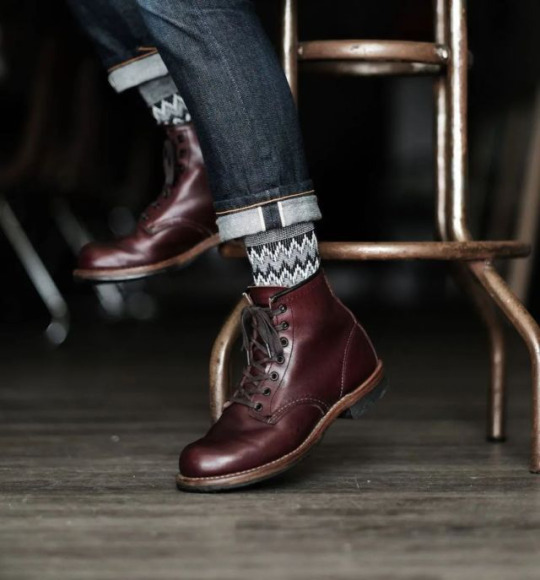
110 notes
·
View notes
Text

RMC Japan: Flashing Geisha Embroidered Selvedge Denim (2004)
692 notes
·
View notes
Text

217 notes
·
View notes
Text


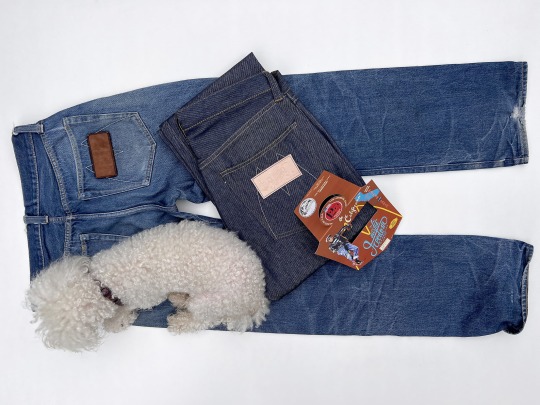

The words “organic denim” kinda belong together as much as “healthy cigarettes” or “sustainable fast fashion” do…
But Cone Mills White Oak Plant, North Carolina, produced a few limited runs of organic selvedge indigo denim back in its days, before one of the last domestic fabric milling operation in the US shut down in 2017.
If you’ve ever owned a pair of pre-2001 classic 501s, the one plant that had been supplying Levi Strauss with its proprietary shrink-to-fit indigo denim for over 100 years is Cone Mills.
Why that mill folded while demand for premium denim fabric had NEVER been that high worldwide at the time?
Beats me.
Blame it on Fast-Fashion new sets of rules reprogramming price points and consumers’ buying habits, and profit-driven suits lured by offshoring production to cut down on costs to accommodate shareholders…
I always thought Levi’s (a public yet somewhat still family-run business to this day) should have considered sacrificing a few assets and saved that plant… But no.
Much cheaper to produce denim jeans in Turkey, Pakistan, Cambodia, Bangladesh, China, Ethiopia etc. And the garment-distressing factories to achieve that desirable « vintage » worn-in look are also right next door! How convenient. Much easier to turn a blind eye on environmental guidelines when they are being violated on the other side of the world…
While the average consumer just wants a good deal, and "Buy Less, Pay More" never sounds too appealing to a society plagued by consumerism.
Anyways, here are two identical (before/after) pairs of Mister Freedom® "Californian" Lot64 OG23, cut from NOS (New Old Stock) « organic » denim produced by Cone Mills, jeans cut & sewn in California, USA.
I wore my pair for about 8 months doing chores + 3 maintenance full washes.
More deets here
#mister freedom ®#mister freedom#made in usa#vintage#Selvedge Denim#Indigo#Denim Evo#Organic Denim#Cone Mills#New Old Stock#Fast Fashion Sucks#Consumerism#Buy Less Pay More
10 notes
·
View notes
Text

18 notes
·
View notes
